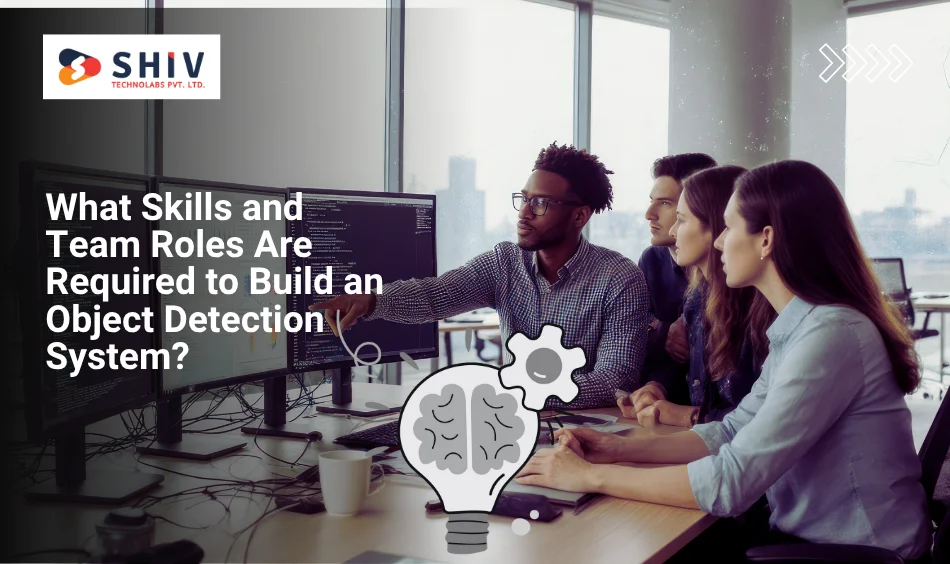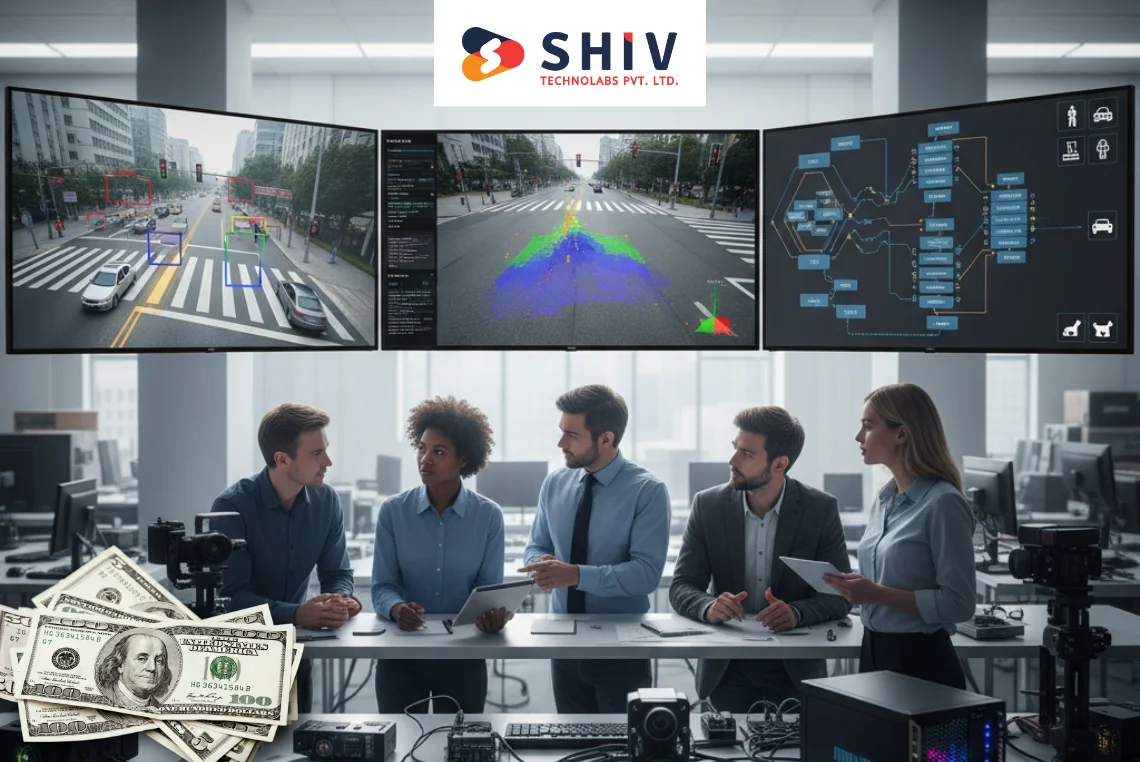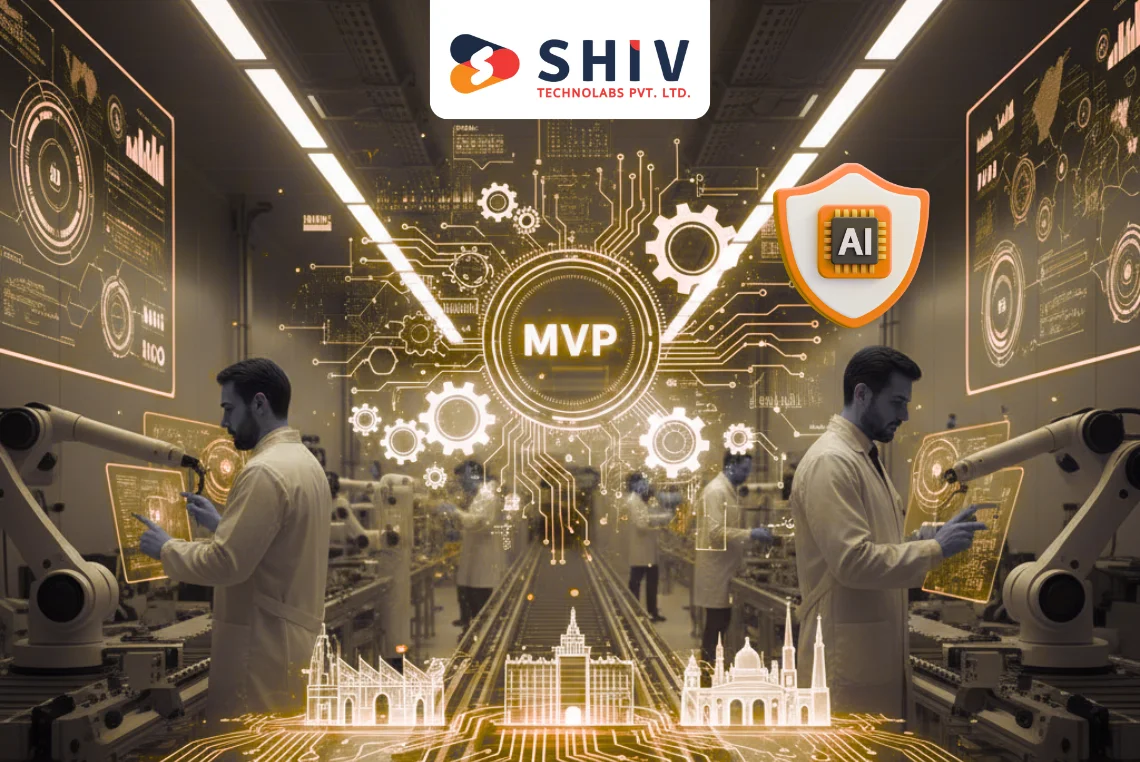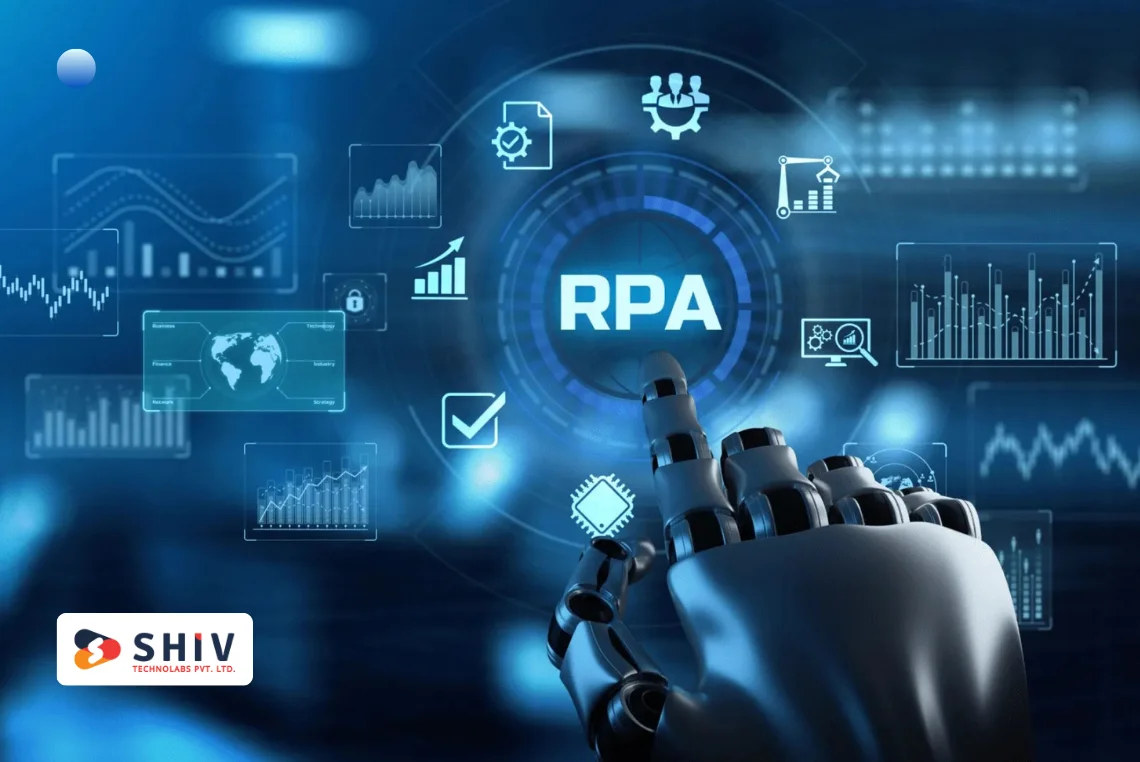Table of Contents
From manufacturing floors to retail spaces, healthcare facilities to security operations, companies are now running systems that spot and identify objects through cameras and sensors. Getting into computer vision development services means you’re doing more than creating software; you’re putting inspection lines on autopilot, catching problems before they spread, tracking inventory as it moves, and making sure safety rules get followed with a computer vision object detection system.
But, here’s what business leaders want to know first: what will the total cost be? Your final number shifts based on how big you go, what kind of data you need, how precise it needs to be, and which tools you pick.
Getting a perspective on these fluctuating parts, what you’ll pay for, and how things get built means you won’t get blindsided later, you’ll map out your spending and timeline knowing what to expect.
Why Do Companies Invest in Computer Vision Object Detection Solutions?
Businesses put money into object-detection tech to take manual work off people’s plates, cut down mistakes, and trim their spending. Here’s what pushes companies to adopt, and which sectors are jumping in first with an AI vision system.
Real-Time Detection For Quality Checks
On production floors, object detection watches products coming down the line. These systems catch defects, spot missing parts, or notice surface damage way quicker than someone eyeballing each item. What you get: less waste, fewer product pulls, more items shipped, and better consistency across everything you make.
Security And Automated Monitoring
Security agents use object detection to get alerts when someone shouldn’t be there, spot people where they don’t belong, catch risky actions, and handle surveillance across large areas. With 24×7 watching, your system does more than just record—it actively keeps things safe.
Inventory & Logistics Automation
Inside distribution centers, storage facilities, and shops, object detection follows boxes, pallets, equipment, and products on racks, and how much you have in stock. Your system can spot items, add them up, send restock signals, or point out things in the wrong spot—making inventory run smoother and reducing loss.
Safety And Compliance Monitoring
In places like building sites, energy operations, or chemical facilities, an AI vision system checks that people have their safety equipment on, stay in designated areas, and stick to the rules. Watching things happen without needing someone there helps you meet requirements, stops accidents, and keeps better records of safety behavior.
Common Industries Adopting Object Detection
- Manufacturing
- Retail & E-commerce
- Smart security
- Logistics
- Healthcare
When you look at custom object detection development, these real-world examples show why putting money into this makes sense.
What Factors Influence the Cost to Develop a Custom Computer Vision Object Detection System?

When you’re figuring out the cost to develop a custom computer vision object detection system, different pieces determine whether your budget needs to be big or reasonable. Here’s what moves the numbers.
How Does Dataset Collection and Labeling Impact Cost?
Getting pictures or video that covers the objects, settings, and light conditions your system will see takes serious work. Then, marking everything up (boxing objects, tagging categories) adds more expense. The more varied your surroundings, the more you’ll spend on getting data ready and marking it up.
Does Model Complexity Affect Cost?
When you want basic object detection (like spotting one thing in steady conditions) your model stays pretty simple. But when you need it to handle many categories, work on device hardware, run instantly, nail high accuracy, and handle different environments, the model gets complicated (bigger design, more training rounds, pricier computing). That pushes your budget up. For broader builds, check AI/ML development services.
How Does Deployment Type Change Pricing?
Going with cloud versus edge hardware shifts your costs in big ways. Cloud setups run on server power, streaming, and network usage. Edge setups want their own cameras or processing chips, sometimes special equipment, and the ability to work without the internet. What you choose affects what you pay upfront and what you’re paying over time.
What Role Does Integration and Testing Play in Budgeting?
Lots of projects miss how much work it takes to connect the vision system with current workflows, business software, production lines, or monitoring screens. Plus, proper testing with datasets, real situations, handling heavy use, and backup scenarios matters a lot. Getting everything connected and tested represents real money in custom object detection development.
If you’re packaging this as a hosted product, see SaaS development services to plan cloud ops and rollout.
What Is the Typical Cost Range for Computer Vision Object Detection Projects?
Here’s a breakdown of typical spending ranges so that you can see where your project falls regarding AI object detection price and how long things take.
| Type | Scope | Cost Range | Timeline |
|---|---|---|---|
| PoC / Prototype | Basic detection | $8,000–$20,000 | 4–8 weeks |
| MVP | 1–2 use-cases, limited scope | $20,000–$70,000 | 8–16 weeks |
| Full Product | Enterprise-grade system | $80,000–$200,000+ | 4–12 months |
Note: Past the initial build, you’ll need money set aside for upkeep, improvements, equipment updates, and fixing data problems. That’s part of what computer vision development costs over time. If you’re a startup, our startup MVP services can help phase this work.
How Do Edge vs Cloud Deployments Affect Pricing?
When you’re picking between an edge or cloud setup for your object detection system, different things drive what you spend.
Cloud Deployment
Going cloud means you’re paying for computing power, storage space, network usage, streaming and running your model. You get flexibility, simpler updates and everything managed in one place but you also pay bills that grow with how much you use and expand.
Edge Deployment
Edge means handling data right where the camera or sensor sits: quicker response, less dependence on networks, stronger privacy. But the equipment costs (cameras, graphics chips, tough housings), setup challenges and keeping things running take more effort.
Factors that impact deployment cost:
- Compute power required (CPU, GPU, FPGA)
- Storage (local vs cloud)
- Bandwidth (streaming vs local processing)
- Real-time speed requirements (latency vs offline)
Picking between cloud and edge stands as a big choice for your AI vision system and directly shapes your spending.
What Skills and Team Roles Are Required to Build an Object Detection System?

Creating a good object detection system is not just about training a model. You need people with different skills. Here’s who typically works on this:
- ML Engineer – creates model design, training setup, fine-tuning parameters.
- CV Engineer – works on computer vision methods, object detection tools, image variations.
- Data Annotator – manages dataset prep, marking things up, checking quality.
- Backend Engineer – creates APIs, data flow, connections with systems and displays.
- DevOps Engineer – sets up deployment (cloud/edge), handles expansion, watches performance, manages deployment.
- QA Tester – checks model results, real-world precision, unusual situations, connections, user experience.
When your company doesn’t have one or more of these skills on staff, what you spend to build might go higher or you might work with a computer vision development company.
If you need extra hands, our IT staff augmentation option can fill specific roles fast.
How Can Businesses Reduce Object Detection Project Costs?
While object-detection systems need real investment, you can trim costs without hurting your long-term returns.
- Start with a PoC before scaling. Prove the idea works, check whether it’s functional, and then grow it.
- Have pre-trained models (YOLO, MobileNet etc.). Adjusting existing models usually costs less than starting fresh.
- Use existing labelled datasets if possible to reduce the cost of annotation and data gathering.
- Use a hybrid compute model (cloud + edge) to balance cost versus performance.
- Keep long-term ROI in focus: the upfront spend may be huge, but the savings from automation, accuracy improvements and process efficiencies often pay off.
These approaches match smart practices in computer vision development and can help keep your project spending sensible.
When Does It Make Sense to Hire Experts Instead of Building In-House?
If you’re wondering whether to outsource your object detection project or build it with your own team, here’s when bringing in outside help through computer vision development services makes strong sense.
Choose external experts when:
- You need quicker delivery and want to go to market faster.
- You lack in-house ML/CV expertise and want to avoid ramp-up risk.
- You want the full stack handled (modeling, dataset, deployment, integration).
- You need predictable budget and scope rather than building from scratch with many unknowns.
Working with the right partner often means you tap into ready-made frameworks, proven pipelines and team know-how—making your route to deployment easier. Share your requirements to get a tailored cost plan and roadmap.
Conclusion
When you invest in a computer vision object detection system, the cost is shaped by your project’s scope, the data preparation, model complexity, deployment approach, and ongoing maintenance.
From initial PoC to full enterprise roll-out, the budget can span from tens of thousands to hundreds of thousands of dollars. For companies looking to partner with a strong partner, you want a trusted computer vision development company that understands the full lifecycle from dataset to deployment to analytics.
At Shiv Technolabs, we specialise in computer vision development services and can help scope your project, define timelines, cost, and deliver a high-impact system. Looking for an accurate project price estimation? Contact our team today to discuss your use case and get a roadmap with estimates of the budget and timeline.
FAQs
What is the average price of a computer vision object detection system?
The price normally varies from about $8000 for a basic prototype to well over $200,000+ for enterprise-grade according to scale, accuracy, deployment environment and complex data set.
How long does it take to develop an object detection project?
It depends: a prototype could take 4-8 weeks, a minimum viable product could take 8-16 weeks, and a full solution could take 4-12 months based on features, deployment, and data requirements.
Do pre-trained models lower the cost of development?
Yes. Using trained models and training them on your data reduces annotation time, training time, and cost and risk of training everything yourself.
Is cloud or edge deployment more cost-effective?
Each has trade-offs: cloud is easier to scale and update, but have ongoing costs. Edge provides decreased latency and the privacy advantages at the trade-off of higher initial hardware cost. Make choices based on performance and budget requirements.
What are the maintenance costs I can expect after deployment?
Maintenance includes dataset updating, model retraining to accommodate for new conditions, hardware service, monitoring, and integration maintenance. These are the long-term costs after the initial development phase.






















